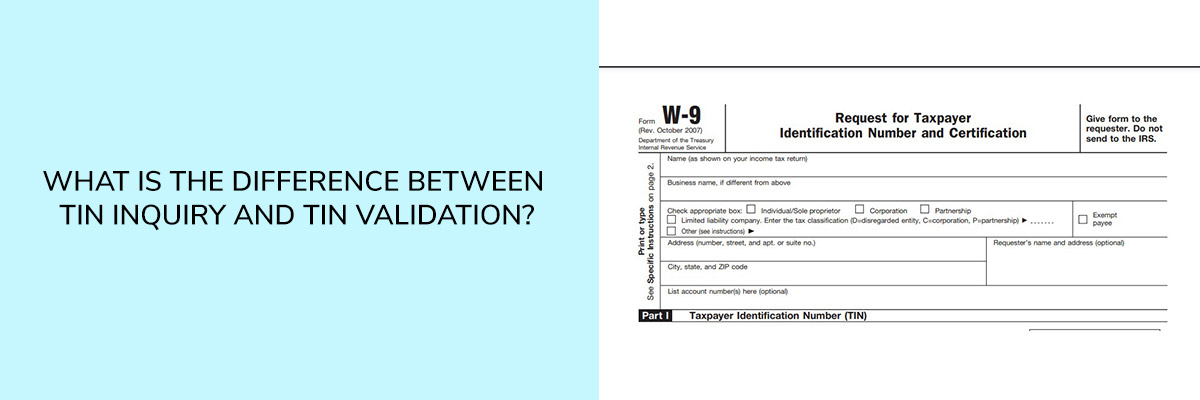Paying taxes is one of the most important duties of a citizen, and it is the responsibility of government institutions, such as the IRS, to ensure that all taxpayers fulfill this duty. To combat tax fraud effectively, the IRS has developed various tools, and one such tool is the TIN (Taxpayer Identification Number) and various tax-related forms such as 1099-MISC, 1099-NEC, Form 1040, Form 1040-ES, etc.
The TIN is a unique nine-digit number with hyphen(s) and it is designed to minimize confusion and tax-related fraud. Under the umbrella term of TIN, two distinct types exist: one for individuals who receive the SSN (Social Security Number), which follows a format of three digits, a hyphen, two digits, another hyphen, and four digits (e.g., 449-75-5639), and another for businesses, known as the EIN (Employer Identification Number), following the format of two digits, a hyphen, and seven additional digits (e.g., 32-9852789). By employing these precise and standardized formats, the IRS ensures clarity and accuracy in identifying taxpayers and safeguarding against potential tax fraud.



In this blog, we will explain two important processes related to TIN (Taxpayer Identification Number): TIN inquiry and TIN validation. If these terms sound confusing or similar to you, don’t worry! We’ll break them down and make it clear how they are different from each other.
Sometimes, the definition of something can be confusing, and you might not fully understand it at first. That’s why we will use examples to help you grasp both the TIN inquiry and TIN validation processes. By providing real-life scenarios, we aim to bring clarity and make these concepts easier to understand.
TIN Inquiry Process
TIN inquiry is a process where an individual taxpayer or a third party, acting on their behalf, obtains a taxpayer identification number. This process occurs in two situations: first, when the taxpayer loses their TIN, and second, when the taxpayer doesn’t know their TIN, leading to the issuance of a new TIN.
During the TIN inquiry, the individual or third party must provide personal or business information of the taxpayer to the tax authorities. Based on this information, the tax authorities then provide the taxpayer identification number (TIN) to the enquirer.
Example of TIN Inquiry
So, Jacob has recently started his own small business venture, selling cakes. To ensure compliance with tax regulations and accurately report his business income, he now requires a Tax Identification Number (TIN). To obtain this TIN, Jacob must undergo the TIN inquiry process.
During this process, he will reach out to the tax authorities or an appropriate government agency and provide them with his personal information, which includes his name, date of birth, and address. Additionally, he will provide important details about his business, such as the business name, its nature, the date of establishment, and other relevant information. Subsequently, the Internal Revenue Service (IRS) will assign a unique number to Jacob, recognizing that he owns a business, and the government agency he contacted will furnish him with his Employer Identification Number (EIN).
TIN Validation Process
So, TIN validation is a process that serves as a crucial procedure to verify the accuracy and authenticity of a Taxpayer Identification Number (TIN) submitted by an individual or a business entity. Through this important check, the objective is to confirm that the TIN provided is genuine and legitimately belongs to the respective taxpayer or business entity. By conducting this verification, potential inconsistencies or errors in the TIN can be identified and rectified, guaranteeing accurate tax reporting and adherence to tax regulations. The process plays a vital role in safeguarding against tax fraud and ensuring the accuracy of tax-related information and it also helps in finding other kinds of fraud such as identity theft. Most of the time, this process is carried out when there is a financial transaction involved, especially when dealing with a new company or individual about whom you do not have much information.
In the TIN validation process, the TIN individual or business provider is compared with the records kept by the tax authorities or relevant government agencies. If the TIN matches the information they have, it is considered valid. However, if there is any difference or the TIN is not found in their database, it signals a problem that requires attention.
Example of TIN Validation
So, a person named John needs a loan to start a business, and to take the loan he went to a bank that gives a loan at a very low-interest rate compared to others. Bank executives told John to provide his TIN and other relevant information. Bank needs some information and his TIN so that they can ensure all the information John is providing is correct and his TIN is also valid. For TIN validation the bank just needs his TIN not other information.
After John provides his TIN, the bank performs a TIN validation process using its own system or an external service. This process quickly checks if the TIN belongs to John. The system cross-checks the provided TIN with the database of the IRS or another tax agency database. If the TIN is found in the database with the correct information, it validates the authenticity of the TIN, and the bank proceeds with John’s loan application. If everything is in order, John will receive the loan.
However, if the TIN is not found in the IRS database, the bank will contact John to provide the correct TIN. It could be that John mistakenly provided the wrong TIN. The Bank can also take appropriate actions to resolve the issue.
Let’s consider another example.
Stacy, a self-employed website designer, has been providing her website design services to various clients. As part of her work, she receives payments from these clients, and they issue Form 1099-MISC to report her earnings for tax purposes.
One day, Stacy receives a Form 1099-MISC from one of her clients, Redleaf Inc. However, when she reviews the form, she notices that her TIN (Taxpayer Identification Number) appears to have a typographical error. She contacts Redleaf Inc. to inform them about the issue and requests a correction.
Redleaf Inc. acknowledges the mistake and initiates the TIN validation process. They verify Stacy’s correct TIN by cross-referencing the information she provided with the official records they have on file. This involves checking her Social Security Number (SSN) or Employer Identification Number (EIN) to ensure accuracy.
Upon confirming the correct TIN, Redleaf Inc. prepares an amended Form 1099-MISC with the accurate TIN and submits it to Stacy. This updated form will reflect the corrected TIN and ensure that the IRS receives accurate information.
Difference between TIN inquiry and TIN validation
| Points of Distinction | TIN Inquiry | TIN Validation |
|---|---|---|
| The purpose of | To obtain a new TIN from the tax authority. | To verify the accuracy and legitimacy of a TIN. |
| The process is initiated by | The Taxpayer or a third party on behalf of the taxpayer. | Financial institutions or entities conducting financial transactions with the taxpayer. |
| Information Required | Personal and/or business details to issue a new TIN. | Only required TIN. |
| Outcome | Issuing a new TIN if not already issued. | Confirmation of the TIN’s legitimacy. |
| Importance | Ensures individuals and businesses have a unique TIN for tax purposes. | Prevents fraud, reduces errors, and ensures compliance with tax regulations. |
| Example | A small business owner applying for a TIN. | The bank verifies a customer’s TIN before providing the loan. |
Conclusion
TIN inquiry and TIN validation are vital processes in ensuring tax compliance and preventing fraud. TIN inquiry allows individuals and businesses to obtain new TINs when needed, while TIN validation ensures the accuracy and legitimacy of provided TINs. These processes play a crucial role in safeguarding against tax-related fraud and maintaining the integrity of tax information. By understanding these processes and their distinctions, taxpayers and financial institutions can navigate tax regulations with confidence and transparency, fostering a more secure and efficient financial landscape.


